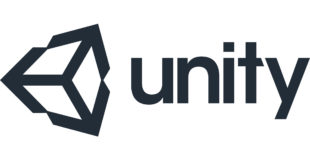Developer: Ready at Dawn
Price: On request
Contact: engine.readyatdawn.com
It shouldn’t need saying, but if any developer is going to suddenly enter the game engine licensing arena, it’s going to need a reputation for excelling technically on at least one platform.
Few studios have managed to make such an impact on one platform as Californian studio Ready at Dawn. Its transferral of Sony’s holy God of War and Jak & Daxter franchises to PSP remains one of the platform’s jewels (and the team’s subsequent bombastic return of all of its PSP devkits gained just as much attention; the later U-turn less so).
The time since has seen them add PS3 and Xbox 360 support. But if you’re a successful game studio, why burden yourself with the effort of breaking into a whole new market?
“We have been making games for more than six years now, so we’re familiar with what it takes to see a project through,” says studio president Didier Malenfant.
“Tools are everything. When people got a chance to see ours, we were being told that we should be licensing them. Combine this with the fact that pretty much no one seems to be satisfied with the current state of things in the middleware space and you’ve got what made us decide to make the step. I think we have something to bring to the table and I know we can help a lot of people in making their games.”
Ready at Dawn clearly has a number of core beliefs when it comes to game development – from the editor to how game designers implement behaviours and script interactivity. Don’t go looking for a list of supported scripting languages – it doesn’t support any.
“It’s one of those religious issues to some extent,” explains Malenfant. “There are two approaches currently: text-based scripting and visual-based scripting. In the first one, you take a language that is often less complete and full featured than a real programming language, you use tools to support it that are less complete or stable than real development environments, and then you go give this to non-programmers like designers and artists. How this can ever be a good idea is beyond me.
“In the second case, everyone who has tried to use visual scripting so far has realised that it just doesn’t scale up. It looks pretty with simple demo scripts but as soon as the behaviors start getting complicated, it turns into a mess. We chose a different approach, which is to allow our programmers to develop simple scripting modules and our designers to build behaviors by attaching these modules to entities in the game like building blocks.”
SUPPORT PANTS
Another important thing to consider in the post Silicon Knights/Epic world is the vendor/game studio divide, and managing it so that licensees don’t feel that they are second fiddle to the studio’s own products.
Malenfant sees the problem, but doesn’t believe that the other solution – licensing tech from companies who don’t make their own products – is any less risky.
“You can’t license something that you’re not using yourself to make games. It just doesn’t work. How can you understand the requirements and workflow issues involved in game development? On the other hand, if you’re going to licence your technology, you cannot expect people to have to either just make clones of your own games or spend a year ripping out or rewriting parts of your tech that they don’t want.”
Ready at Dawn’s approach, then, is to completely distance the engine licensing business from the studio, treating it as just another licensee.
It’s going to be a difficult balancing act to manage, but Malenfant isn’t denying that. “We have a lot of work ahead of us but, just like when we started Ready At Dawn, we’re going about it one step at a time and with a no-nonsense approach.”
…
Editor-in-grief
One particularly tantalising morsel hidden away in the pre-release information is that the level editor included as part of the engine’s toolset is ‘non-proprietary’, and that it provides ‘access to the industry’s standard in 3D editing’.
Eager for more information, we pressed Malenfant on what that means. Sadly, he was tight-lipped: “We haven’t yet announced everything in the pipeline that will shed light on our editing environment, but I can say that we strongly believe that the days of proprietary editors are over.
“Why force your team to learn a different tool than what they normally use? We let artists, level designers, modelers and game designers use one single environment to edit all game content; there’s no artificial separation between art, modeling and level design. It’s part of of theme of having everything integrated, all in one place. We like things simple and that simply work.”
Our money’s on some sort of Max/Maya integration, and given Malenfant’s earlier mention of combining the studio’s tech with existing middleware and licensing out the whole thing it’s not beyond the realm of possibility that only one package will be supported, but will be included in the deal.
It’s once again a religious stance, but one that the team is very clearly pushing on customers – a rare thing in the days of middleware trying to be everything to everyone. Then again, that’s where that reputation helps – and it might be worth rethinking your methodology for.

 MCV/DEVELOP News, events, research and jobs from the games industry
MCV/DEVELOP News, events, research and jobs from the games industry



